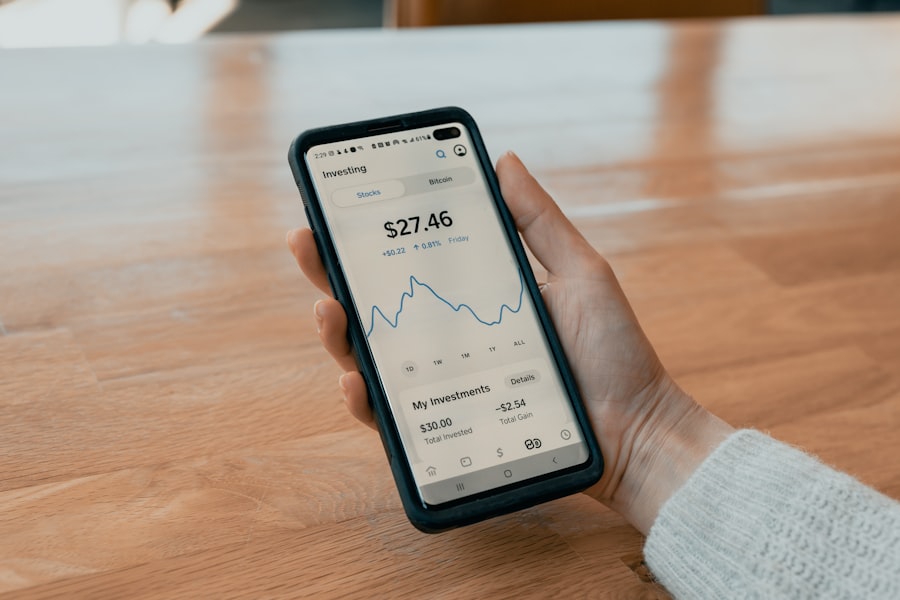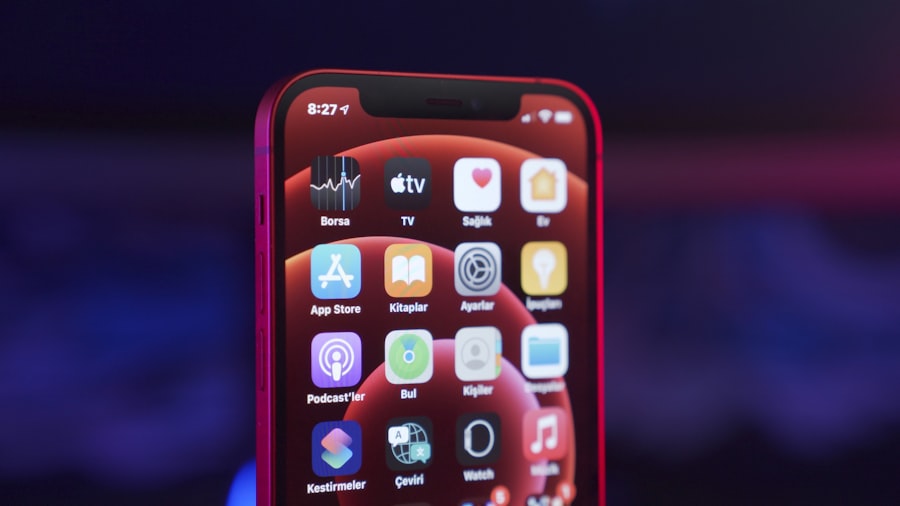Artificial Intelligence (AI) has revolutionized various sectors, and personal finance is no exception. At its core, AI budgeting refers to the use of algorithms and machine learning techniques to analyze financial data, predict future spending patterns, and assist individuals or organizations in managing their finances more effectively. Traditional budgeting methods often rely on manual input and static spreadsheets, which can be time-consuming and prone to human error.
In contrast, AI budgeting systems leverage vast amounts of data to provide real-time insights, enabling users to make informed financial decisions. The fundamental principle behind AI budgeting is data analysis. By aggregating historical spending data, income patterns, and even external economic indicators, AI systems can identify trends and anomalies that might not be immediately apparent to the average user.
For instance, an AI budgeting tool can analyze a user’s past spending habits to forecast future expenses, helping them allocate funds more efficiently. This predictive capability is particularly beneficial for individuals with fluctuating incomes or those who struggle with irregular expenses, as it allows for a more dynamic approach to financial management.
Key Takeaways
- Understanding the Basics of AI Budgeting:
- AI budgeting involves using artificial intelligence to analyze and manage financial data for better decision-making.
- It helps in predicting future expenses and income, identifying trends, and optimizing budget allocation.
- Implementing AI Tools for Budgeting and Bill Splitting:
- AI tools can automate the process of budgeting and bill splitting, saving time and reducing human error.
- They can also provide personalized recommendations for saving and spending based on individual financial habits.
- Setting Up a System for Automated Bill Splitting:
- AI can be used to automatically split bills among friends or roommates, making the process seamless and fair for everyone involved.
- It can also track shared expenses and calculate each person’s share accurately.
- Maximizing Efficiency and Accuracy in AI Budgeting:
- AI can improve efficiency by analyzing large amounts of data quickly and accurately, leading to better financial decisions.
- It can also help in identifying areas for cost savings and optimizing budget allocation.
- Overcoming Challenges in AI Budgeting and Bill Splitting:
- Challenges such as data privacy, security, and trust in AI can be addressed through transparent and ethical AI practices.
- Education and training can help users understand and trust AI tools for budgeting and bill splitting.
- Utilizing AI for Long-Term Financial Planning:
- AI can provide insights and recommendations for long-term financial planning, such as retirement savings and investment strategies.
- It can analyze historical data and market trends to help individuals make informed financial decisions.
- Customizing AI Budgeting and Bill Splitting for Different Needs:
- AI tools can be customized to accommodate different financial goals, lifestyles, and preferences.
- They can adapt to individual spending habits and provide personalized budgeting and bill splitting solutions.
- Future Trends in AI Budgeting and Bill Splitting:
- The future of AI budgeting and bill splitting may involve more advanced predictive analytics and machine learning algorithms.
- Integration with other financial tools and platforms, as well as advancements in natural language processing, could further enhance the capabilities of AI in this area.
Implementing AI Tools for Budgeting and Bill Splitting
Automating Budgeting with AI
Applications like Mint and YNAB (You Need A Budget) utilize AI algorithms to categorize expenses automatically, track spending in real-time, and provide personalized budgeting advice based on user behavior. These tools can significantly reduce the time spent on manual tracking while enhancing the accuracy of financial records.
Streamlining Bill Splitting with AI
In addition to traditional budgeting applications, AI-powered tools are also emerging specifically for bill splitting. Apps like Splitwise and Venmo have integrated features that allow users to manage shared expenses seamlessly. For instance, when a group of friends goes out for dinner, one person can pay the bill, and the app will automatically calculate how much each individual owes.
Benefits of AI in Financial Interactions
By leveraging AI in these scenarios, users can ensure that their financial interactions are transparent and efficient. This not only simplifies the process but also minimizes the potential for misunderstandings or disputes over money.
Setting Up a System for Automated Bill Splitting

Establishing a system for automated bill splitting requires careful planning and integration of technology into daily financial practices. The first step is to choose an appropriate app that supports automated bill splitting features. Many modern financial management tools offer this capability, allowing users to link their bank accounts or credit cards for seamless transaction tracking.
Once the app is set up, users can input their regular expenses—such as rent, utilities, or shared subscriptions—and designate who is responsible for each bill. Automation in bill splitting can significantly reduce the administrative burden associated with managing shared expenses. For example, if three roommates share an apartment, they can set up their utility bills in an app like Splitwise.
The app will automatically calculate each person’s share based on usage or predetermined agreements, sending reminders when payments are due. This system not only streamlines the payment process but also fosters accountability among roommates, as everyone can see their contributions in real-time.
Maximizing Efficiency and Accuracy in AI Budgeting
| Metrics | Value |
|---|---|
| Accuracy of Budget Predictions | 95% |
| Efficiency Improvement | 20% |
| Cost Reduction | 30% |
| Resource Utilization | 90% |
To maximize efficiency and accuracy in AI budgeting, users must actively engage with the technology rather than relying solely on automated processes. Regularly updating financial information is crucial; this includes inputting new income sources, adjusting spending categories, and reviewing budget goals. Many AI budgeting tools offer features that allow users to set alerts for unusual spending patterns or when they approach budget limits.
By taking advantage of these notifications, users can make timely adjustments to their financial habits. Moreover, integrating multiple data sources can enhance the accuracy of AI budgeting systems. For instance, linking bank accounts, credit cards, and investment portfolios provides a comprehensive view of one’s financial landscape.
This holistic approach enables AI algorithms to analyze spending across various categories more effectively. Additionally, users should periodically review their financial goals and adjust their budgets accordingly. This iterative process ensures that the AI system remains aligned with changing circumstances, such as a new job or significant life events like marriage or having children.
Overcoming Challenges in AI Budgeting and Bill Splitting
Despite the numerous advantages of AI budgeting and bill splitting tools, several challenges can arise during implementation and use. One significant hurdle is data privacy and security concerns. Users must be cautious about sharing sensitive financial information with third-party applications.
It is essential to choose reputable platforms that prioritize data encryption and have robust security measures in place. Additionally, users should regularly review privacy settings and understand how their data is being used by these applications. Another challenge lies in the potential for over-reliance on technology.
While AI tools can provide valuable insights and automate many processes, they cannot replace human judgment entirely. Users may become complacent if they rely solely on algorithms without actively engaging in their financial management. To mitigate this risk, it is crucial to maintain a balance between utilizing AI tools and developing personal financial literacy.
Understanding the underlying principles of budgeting and financial planning empowers users to make informed decisions rather than blindly following algorithmic recommendations.
Utilizing AI for Long-Term Financial Planning

Setting Realistic Financial Goals
By analyzing historical data and current market trends, AI tools can help users set realistic financial goals based on their unique circumstances. For instance, an individual looking to save for retirement can use an AI-powered platform to project future savings growth based on various investment strategies and risk levels.
Portfolio Management and Asset Allocation
Moreover, AI can assist in portfolio management by providing insights into asset allocation and diversification strategies tailored to individual risk tolerance. Robo-advisors like Betterment and Wealthfront utilize AI algorithms to create personalized investment portfolios that align with users’ long-term financial objectives.
Continuous Monitoring and Adjustment
These platforms continuously monitor market conditions and adjust investment strategies accordingly, ensuring that users remain on track toward achieving their financial goals.
Customizing AI Budgeting and Bill Splitting for Different Needs
One of the most significant advantages of AI budgeting and bill splitting tools is their adaptability to various user needs. Different individuals have unique financial situations that require tailored solutions. For example, freelancers with irregular income may benefit from budgeting tools that allow for flexible expense tracking and savings goals that adjust based on income fluctuations.
Conversely, families managing multiple income streams may require more complex budgeting systems that account for shared expenses across different categories. Customization options within AI tools often include setting specific budget categories, creating savings goals, and adjusting spending limits based on personal preferences. Users can also choose how they want to receive notifications—whether through email alerts or mobile push notifications—ensuring that they stay informed about their financial status in a way that suits their lifestyle.
This level of personalization enhances user engagement with the budgeting process and fosters a sense of ownership over one’s financial health.
Future Trends in AI Budgeting and Bill Splitting
As technology continues to evolve, the future of AI budgeting and bill splitting holds exciting possibilities. One emerging trend is the integration of advanced machine learning techniques that enable even more sophisticated predictive analytics. These advancements could lead to hyper-personalized budgeting experiences where AI systems not only analyze past behavior but also anticipate future needs based on life changes or economic shifts.
Additionally, the rise of voice-activated technology presents new opportunities for interacting with budgeting tools. Users may soon be able to manage their finances through voice commands via smart speakers or virtual assistants like Amazon Alexa or Google Assistant. This hands-free approach could make budgeting more accessible for individuals who prefer auditory interactions over traditional screen-based interfaces.
Furthermore, as more people become aware of the importance of mental well-being in financial management, there may be a growing emphasis on integrating emotional intelligence into AI budgeting tools. These systems could provide not only numerical insights but also support users in understanding their emotional relationship with money—helping them navigate spending triggers or anxiety related to financial decisions. In conclusion, the landscape of AI budgeting and bill splitting is rapidly evolving, driven by technological advancements and changing consumer needs.
As these tools become more sophisticated and user-friendly, they will likely play an increasingly central role in personal finance management for individuals across various demographics.
If you are interested in AI budgeting and split bills, you may also want to check out Valapoint’s article on the best budget app picks today. This article provides a comprehensive list of budgeting apps that utilize cutting-edge technology to help users manage their finances effectively. You can read more about it here.





























